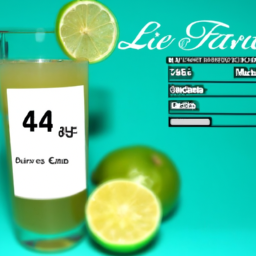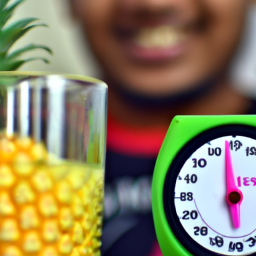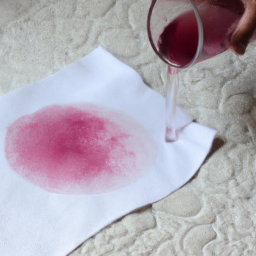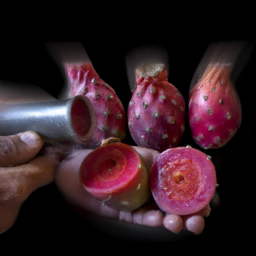As I sit here sipping on my refreshing lime juice, I am struck by its zesty and rejuvenating flavor. Lime juice is a key ingredient in many culinary cultures, adding a vibrant kick to Mexican dishes and being essential in the classic mojito cocktail.
But have you ever stopped to wonder about the nutritional value of this citrusy delight? Lime juice is not just a flavorful addition to your meals and drinks, it also packs a nutritional punch. It is low in calories and high in vitamin C and antioxidants, making it a healthy choice for those watching their weight and looking to boost their immune system.
But how many calories are in lime juice exactly? Let’s dive into the nutritional facts and explore the benefits of this versatile ingredient in more detail.
Key Takeaways
- Lime juice is low in calories, making it a great addition to weight management diets.
- Lime juice is high in vitamin C and antioxidants, which can boost the immune system and protect against chronic diseases.
- Lime juice can be added to water or blended drinks to encourage proper hydration.
- Consuming lime juice before exercise can enhance the benefits of physical activity.
Nutritional Value of Lime Juice
You’ll be surprised at the high nutritional value of lime juice, with plenty of vitamins and minerals packed into each serving. Lime juice is an excellent source of Vitamin C, which is essential for boosting the immune system and protecting the body against infections.
Additionally, lime juice is rich in antioxidants, which help to neutralize free radicals that can damage cells and lead to chronic diseases like cancer and heart disease.
Apart from its nutritional benefits, lime juice is also a versatile ingredient in cooking and can add a tangy flavor to many dishes. You can use lime juice in marinades, dressings, cocktails, and even desserts.
Some popular lime juice recipes include guacamole, ceviche, and key lime pie. Incorporating lime juice into your diet can be a delicious way to reap its benefits for your health.
In the following section, we’ll explore how lime juice fits into a healthy diet.
How Lime Juice Fits into a Healthy Diet
Eating a balanced diet can make you feel energized and confident in your health choices. Lime juice is a great addition to a healthy diet as it’s low in calories and packed with vitamin C and antioxidants. Here are four ways to incorporate lime juice into your daily diet:
-
Squeeze lime juice over your salads instead of high-calorie dressings for a tangy and refreshing flavor.
-
Add lime juice to your water for a refreshing and hydrating drink. Lime water can also help boost your metabolism and aid in digestion.
-
Use lime juice in healthy recipes such as grilled fish or chicken for a burst of flavor without adding extra calories.
-
Make a healthy and delicious smoothie by blending lime juice with spinach, banana, and almond milk for a nutrient-packed breakfast or snack.
In addition to being a healthy addition to your meals, lime juice can also be used in cocktails.
Lime Juice in Cocktails
Adding lime juice to cocktails not only enhances the flavor but also adds a refreshing twist to classic drinks. Lime juice is a common ingredient in many popular cocktail recipes, such as margaritas, mojitos, and daiquiris. Its tart and acidic flavor profile balances out the sweetness of other ingredients like simple syrup or fruit juices.
Lime juice can also be used as a garnish, providing a pop of color and a touch of acidity to the drink. When using lime juice in cocktails, it’s important to remember that a little goes a long way. Too much lime juice can overpower the other flavors in the drink and make it too sour. It’s also important to use fresh lime juice rather than bottled lime juice, as fresh lime juice has a brighter and more complex flavor profile.
Moving on to the next topic, lime juice is also a great addition to marinades and dressings.
Lime Juice in Marinades and Dressings
Using lime juice in marinades and dressings can transform the flavor of your dishes, giving them a tangy and zesty taste. Lime juice is a common ingredient in many cuisines, especially those from Latin America and Southeast Asia. It can be used as a marinade for meats, fish, and vegetables, or as a dressing for salads and other dishes.
In addition to its flavor-enhancing properties, lime juice is also known for its acidity levels. The acid in lime juice can help tenderize meat and seafood, making them more tender and flavorful. It also acts as a natural preservative, helping to extend the shelf life of certain foods. When using lime juice in marinades and dressings, it’s important to balance the acidity levels with other ingredients to achieve the desired flavor profile.
The importance of hydration can’t be overstated, especially during hot summer months. Drinking enough water is essential for maintaining good health and preventing dehydration. Incorporating lime juice into your water can add a refreshing and flavorful twist to your hydration routine.
The Importance of Hydration
Staying hydrated is crucial for maintaining optimal health, and you can easily incorporate a refreshing twist to your water by squeezing in some fresh lime. Adequate water consumption is essential for the proper functioning of the body, as water helps to regulate body temperature, transport nutrients and oxygen, and remove waste products.
Dehydration symptoms can range from mild to severe, and may include thirst, dry mouth, headache, dizziness, fatigue, and dark urine. To prevent dehydration, it’s recommended to drink plenty of water throughout the day, especially during physical activity or hot weather.
Incorporating lime juice into your water is a great way to add flavor and encourage water consumption. Lime juice is not only hydrating, but also contains vitamin C, antioxidants, and other beneficial nutrients. Adding lime to your water can also help to reduce cravings for sugary drinks, which can aid in weight loss efforts.
In the next section, we’ll explore the potential benefits of lime juice for weight loss.
Lime Juice and Weight Loss
If you’re looking to shed some pounds, incorporating lime juice into your water could be just the ticket – it’s a great way to kill two birds with one stone and achieve your weight loss goals with minimal effort. Lime juice is known to boost metabolism and help burn fat. This is due to the high amount of vitamin C found in lime juice, which is known to aid in fat oxidation.
Additionally, consuming lime juice before exercise can help increase endurance and enhance the benefits of physical activity. Adding lime juice to your water can also help you stay hydrated during your weight loss journey. As we discussed earlier, dehydration can lead to a slower metabolism and hinder weight loss progress.
By adding lime juice to your water, you’ll be more likely to drink enough water and stay hydrated throughout the day. Plus, the tangy flavor of lime juice can make plain water more enjoyable to drink.
Now, let’s move on to how lime juice can benefit your digestion.
Lime Juice and Digestion
When it comes to digestive health, citrus fruits like lime can be incredibly beneficial. As someone who’s struggled with digestive issues in the past, I’ve found incorporating lime juice into my diet to be helpful.
Not only does it add flavor to my water and other drinks, but it also has a low calorie count, making it a great addition to any digestive health plan.
Benefits of Citrus for Digestive Health
Did you know incorporating citrus fruits like lime juice into your diet can improve digestion and promote gut health?
Citrus fruits are rich in dietary fiber, which helps to regulate bowel movements and prevent constipation. Lime juice, in particular, contains high levels of citric acid, which can stimulate the production of digestive juices and enzymes, aiding in the breakdown of food in the stomach and small intestine.
In addition to its fiber and citric acid content, lime juice also contains compounds called flavonoids, which have anti-inflammatory properties that can reduce inflammation in the digestive tract. This can be especially beneficial for those with inflammatory bowel disease or other digestive issues.
By incorporating lime juice into your diet, you can reap the digestive benefits of citrus and improve your overall gut health. So, how can you incorporate lime juice into a digestive health plan? Let’s explore some ideas.
Incorporating Lime Juice into a Digestive Health Plan
As I’ve learned about the benefits of citrus for digestive health, I can’t help but think about how I can incorporate more of it into my diet. One way that I’ve found is by incorporating lime juice into my digestive health plan.
Lime juice is a great source of vitamin C, which can help boost the immune system and aid in digestion. Incorporating lime juice into my digestive health plan has been easy. I add it to my water or tea for a refreshing and citrusy twist, or I use it as a marinade for my proteins. The tartness of the lime also pairs well with leafy greens in salads or as a dressing.
Overall, I’ve found that adding lime juice to my meals and drinks has not only been beneficial for my digestive health, but it also adds a delicious and tangy flavor to my meals.
Now, let’s transition into the next topic. Speaking of drinks, it’s important to consider the calorie count of digestive health drinks.
Calorie Count of Digestive Health Drinks
If you’re trying to watch your waistline, it’s important to keep in mind that some digestive health drinks can pack a punch when it comes to calories, so don’t judge a book by its cover.
While these drinks may tout digestive health benefits such as improved gut flora and reduced bloating, many popular brands contain added sugars and other ingredients that can quickly add up in terms of calories.
Some of these drinks can contain upwards of 100 calories per serving, which can add up if consumed frequently throughout the day.
It’s important to read labels carefully and choose digestive health drinks with minimal added sugars and calories.
Look for brands that use natural ingredients like ginger, turmeric, and probiotics to support digestive health.
By doing so, you can still enjoy the digestive health benefits of these drinks without sabotaging your weight loss goals.
With that said, let’s move on to the next topic: how lime juice can benefit not only your digestive system, but also your immune system.
Lime Juice and Immune System
You’ll be pleased to know that lime juice can help boost your immune system and keep you healthy! Lime juice is a great source of Vitamin C, which is a powerful antioxidant that helps protect your body against illness and disease. In fact, just one small lime contains about 20% of your recommended daily intake of Vitamin C! This makes lime juice a great addition to your diet if you want to boost your immune system and stay healthy.
But that’s not all – lime juice also has other immune-boosting properties. Some studies suggest that lime juice may have antimicrobial and anti-inflammatory effects, which can help keep your body healthy and protect against infections. So next time you’re looking for a refreshing drink, why not try a glass of lime juice? Your immune system will thank you!
| Nutrient | Amount per 100g |
|---|---|
| Vitamin C | 30 mg |
| Calcium | 40 mg |
| Iron | 0.6 mg |
| Potassium | 102 mg |
As you can see from the table, lime juice is not only a great source of Vitamin C, but also contains other important nutrients like calcium, iron, and potassium. These nutrients are essential for maintaining good health and can help support your immune system. In the next section, we’ll explore how lime juice can also benefit your skin health.
Lime Juice and Skin Health
I’ve always been interested in the benefits of citrus fruits for maintaining healthy skin. Lime juice, in particular, has been shown to have a range of skin-boosting benefits due to its high vitamin C content.
Incorporating lime juice into a skincare routine can be an easy and affordable way to reap these benefits. Plus, it’s a low-calorie alternative to sugary drinks that can also contribute to skin damage.
Benefits of Citrus for Skin Health
Citrus fruits, like lime juice, are packed with vitamin C, which plays a crucial role in maintaining healthy skin. Vitamin C is an antioxidant that helps protect the skin from free radical damage caused by environmental pollutants and UV radiation. Additionally, vitamin C aids in collagen production, which is essential for maintaining skin elasticity and preventing wrinkles.
By incorporating citrus fruits into your diet, whether through citrus recipes or citrus supplements, you can help keep your skin looking youthful and radiant. However, it’s important to note that while consuming citrus fruits can be beneficial for skin health, it’s not a substitute for a proper skincare routine.
Incorporating lime juice into a skincare routine can provide additional benefits, such as brightening the complexion and reducing the appearance of dark spots. But, it’s important to be cautious when using lime juice on the skin, as it can be acidic and cause irritation. As with any new skincare product, it’s best to do a patch test before incorporating it into your routine.
Incorporating Lime Juice into a Skincare Routine
As we learned in the previous section, citrus fruits like lime are rich in antioxidants and vitamins that benefit our skin. But did you know that lime juice can also be used as a natural ingredient in your skincare routine? Here are some tips to help you incorporate lime juice into your daily regimen:
-
Use lime juice as a toner: Mix equal parts of lime juice and water to make a refreshing toner that helps to tighten pores and brighten dull skin.
-
Add lime juice to your face masks: Lime juice can be added to a variety of DIY face masks for its brightening and exfoliating properties.
-
Use lime juice to lighten dark spots: Apply a mixture of lime juice and honey to dark spots or blemishes to help lighten them over time.
In addition to its skincare benefits, lime juice can also be a healthy addition to your diet. In the next section, we’ll take a look at the calorie count of some skin-boosting drinks.
Calorie Count of Skin-Boosting Drinks
Adding skin-boosting drinks to your diet can be a great way to nourish your skin, but it’s important to be mindful of their calorie content. While many skin-boosting drinks are low in calories, some can be high in sugar and other additives that can be detrimental to your health.
When choosing skin-boosting drinks, it’s important to consider the ingredients and calorie count to ensure that you’re getting the most skin benefits without adding unnecessary calories to your diet. Luckily, there are many alternative sources of skin-boosting drinks that are low in calories and high in nutrients.
For example, green tea is a great source of antioxidants that can help protect your skin from damage, and it’s also low in calories. Similarly, coconut water is a hydrating and refreshing drink that is low in calories and full of electrolytes that can help keep your skin looking healthy and radiant.
By choosing skin-boosting drinks that are low in calories and high in nutrients, you can nourish your skin from the inside out without compromising your health or your waistline.
Frequently Asked Questions
Can lime juice be harmful to certain health conditions?
I’ve found that lime juice can be harmful for those managing acidity or taking certain medications. It can interact with drugs like statins and blood thinners. It’s important to consult with a healthcare provider.
Is there a difference in calorie count between fresh lime juice and bottled lime juice?
I’ve learned that fresh lime juice typically has fewer calories than bottled lime juice, which may contain added sugars or other ingredients. When using lime juice in cooking, opt for fresh squeezed to keep the calorie count low.
How much lime juice should be consumed daily for maximum health benefits?
Lime water is a refreshing drink packed with benefits. Consuming a moderate amount of lime juice daily aids in weight loss and promotes healthy digestion. Incorporate lime juice into your diet for maximum health benefits.
Can lime juice be used as a natural remedy for illnesses?
As a natural remedy, lime juice has been shown to have health benefits such as boosting immunity and aiding in digestion. Incorporating it into your diet can provide a variety of helpful nutrients.
What are some alternative uses for lime juice besides consumption?
I have found that lime juice has many alternative uses besides consumption. It can be used in skincare routines as a natural toner or exfoliator, and in cocktails as a flavorful addition. These uses have been supported by scientific research.
Conclusion
Well, after all that research, I can confidently say that lime juice is an incredibly versatile and healthy addition to any diet. With only about 8 calories per tablespoon, this tart and tangy juice is a low-calorie way to add flavor to everything from cocktails to marinades to dressings.
Plus, it’s chock-full of vitamin C, which is essential for a healthy immune system and glowing skin. But let’s not forget the most important aspect of lime juice: hydration. Staying hydrated is key to overall health and wellness, and adding a squeeze of lime to your water can make it more refreshing and enjoyable to drink.
So next time you’re in need of a thirst-quencher, consider reaching for a glass of lime-infused water or a lime-based cocktail. Your body will thank you.
Ilana has been a vegan for over 10 years. She originally made the switch for health reasons, but soon found herself becoming more and more passionate about the ethical and environmental implications of a vegan lifestyle. Ilana is the author of The Graceful Kitchen, a blog all about veganism. She loves to cook up delicious and nutritious vegan meals, and share her recipes with others who are interested in leading a cruelty-free life. Ilana is also a strong advocate for using whole foods as the foundation of a healthy diet, and believes that going vegan is one of the best ways to achieve this.










